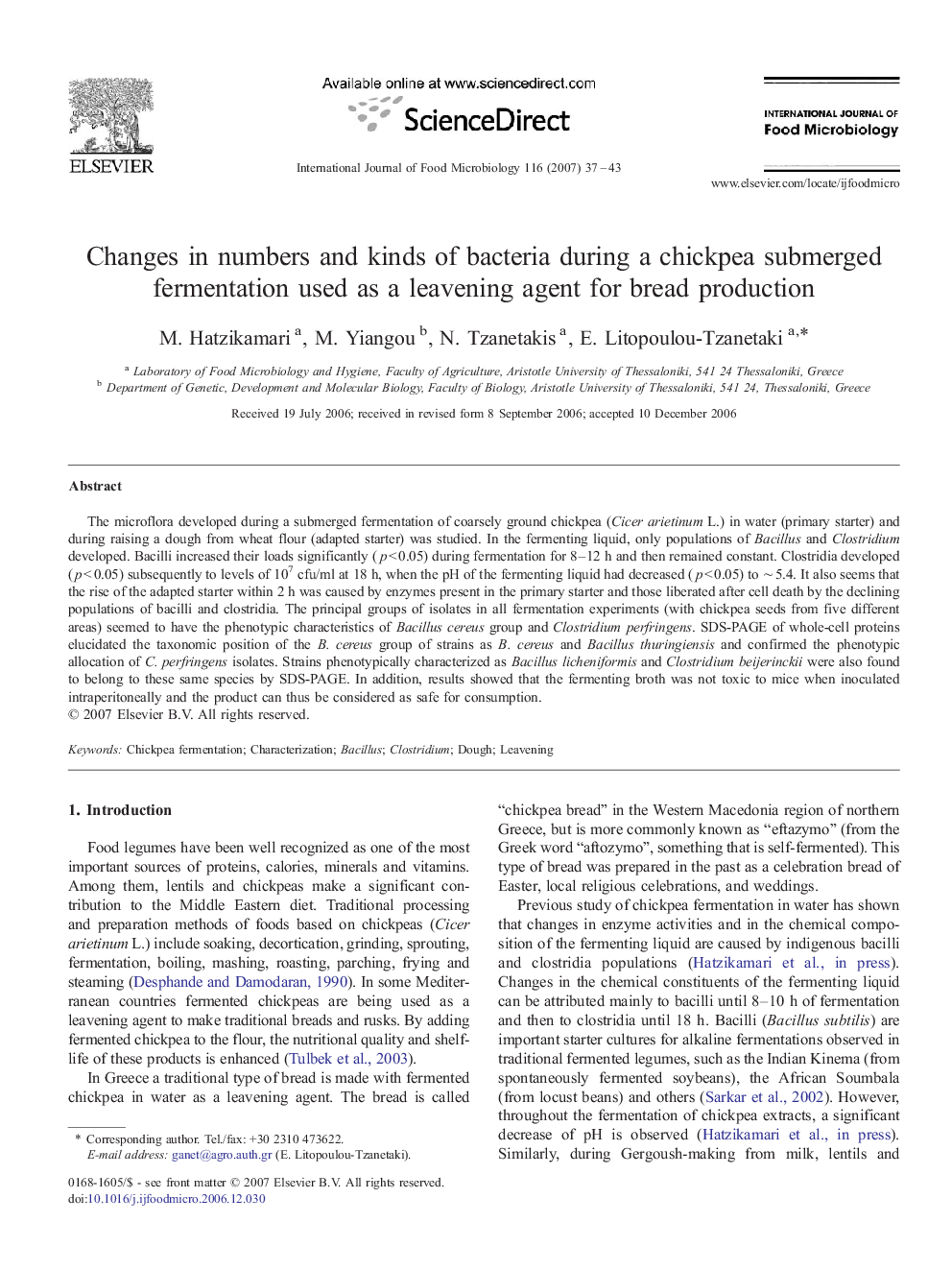| Article ID | Journal | Published Year | Pages | File Type |
|---|---|---|---|---|
| 4369251 | International Journal of Food Microbiology | 2007 | 7 Pages |
The microflora developed during a submerged fermentation of coarsely ground chickpea (Cicer arietinum L.) in water (primary starter) and during raising a dough from wheat flour (adapted starter) was studied. In the fermenting liquid, only populations of Bacillus and Clostridium developed. Bacilli increased their loads significantly (p < 0.05) during fermentation for 8–12 h and then remained constant. Clostridia developed (p < 0.05) subsequently to levels of 107 cfu/ml at 18 h, when the pH of the fermenting liquid had decreased (p < 0.05) to ∼ 5.4. It also seems that the rise of the adapted starter within 2 h was caused by enzymes present in the primary starter and those liberated after cell death by the declining populations of bacilli and clostridia. The principal groups of isolates in all fermentation experiments (with chickpea seeds from five different areas) seemed to have the phenotypic characteristics of Bacillus cereus group and Clostridium perfringens. SDS-PAGE of whole-cell proteins elucidated the taxonomic position of the B. cereus group of strains as B. cereus and Bacillus thuringiensis and confirmed the phenotypic allocation of C. perfringens isolates. Strains phenotypically characterized as Bacillus licheniformis and Clostridium beijerinckii were also found to belong to these same species by SDS-PAGE. In addition, results showed that the fermenting broth was not toxic to mice when inoculated intraperitoneally and the product can thus be considered as safe for consumption.
